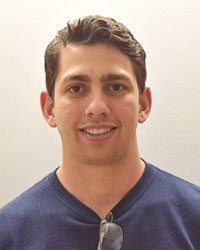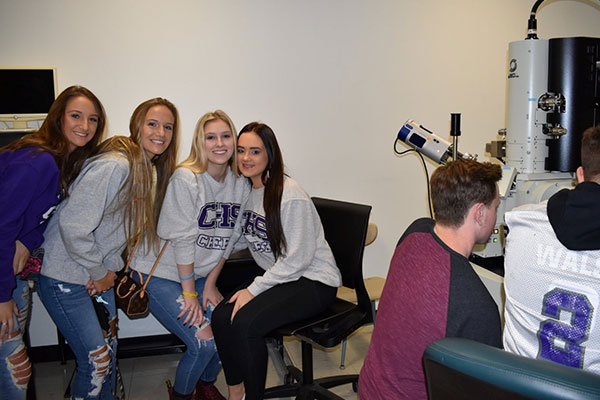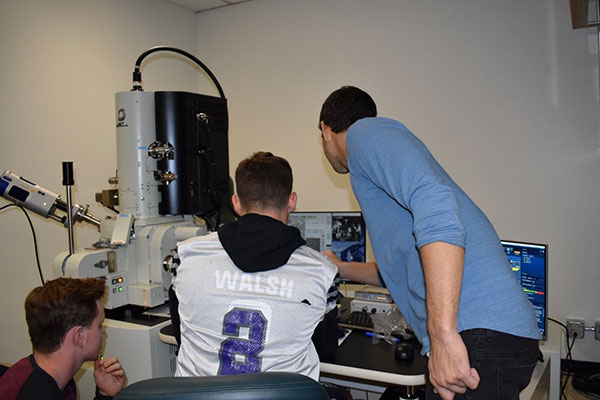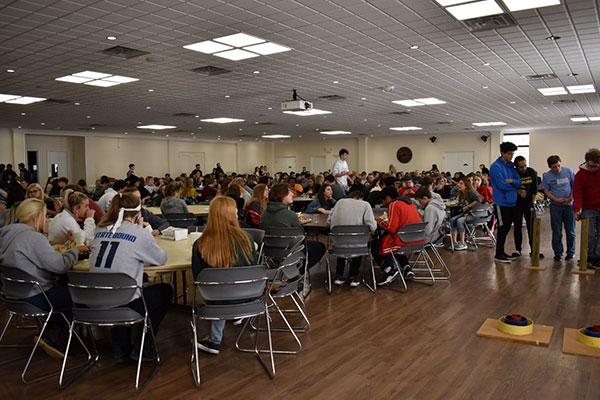
The Marshall University Physics Department was busy with a range of events in October and November. It was during several of these events that Appalachian Freshwater Initiative (AFI) graduate student member Ryan Vincent, working under Dr. Sean P. McBride, helped promote his research, and science in general, to a younger generation of students. Vincent also successfully defended his thesis early in November and will graduated at the conclusion of the semester.
Vincent’s first significant recruiting event was assisting with the Third Annual High School Physics Day at Marshall University on October 18. The event was a success with approximately 400 high school students and teachers in attendance from throughout the region. In fall 2018, this event made national headlines in the SPS magazine, a quarterly magazine for the Society of Physics Students, an organization of which Vincent and McBride, the event’s lead organizer, are members. Attendees experienced a series of physics demos provided by the physics faculty. Lunchtime games were administered with Chesapeake High School in neighboring Ohio winning a drone equipped with a camera for their school. Students and teachers were also to able experience hands-on demos in the physics department, explore the cosmos in the department’s portable planetarium, investigate the nano-world using two Scanning Electron Microscopes (SEM) in the Science Building, and learn about phase changes when making some liquid nitrogen ice cream. Sodexo Catering Fund covered food costs while. The Joan C. Edwards School of Medicine helped sponsor the construction of several demos. The Marshall University Society of Physics Students helped with event preparation. Specifically, Vincent showcased Marshall University’s new JEOL JSM-7200F Field Emission Scanning Electron Microscope (NSF Award 1828358) and how it is used to characterize his silica nanospheres in research. Vincent is working with McBride on fabricating high-flux silica nanosphere substrates to support conforming self-assembled gold nanoparticle monolayers for applications in size-selective filtration. Vincent is supported through the NSF-EPSCoR RII-Track-1 Award.
Vincent also presented the new SEM and its uses in AFI-related research at the recent Appalachian American Association of Physics Teachers (A-AAPT 2019) meeting on November 9 in Huntington. Vincent showed conference attendees the importance of this instrument for small scale characterization in addition to giving a brief talk about the fabrication of high-flux silica nanosphere substrates. This A-AAPT meeting was open to students and high school teachers from Tri-state region. The meeting’s theme commemorated the 50th anniversary of the first moon landing. Dr. Don Thomas, former NASA astronaut and a veteran of four space shuttle missions, gave a free public keynote to kick off the conference. Bo Lowrey, a NASA solar system ambassador, also provided a free public talk. The meeting provided workshops presented by local educators from surrounding high schools and universities. The conference was organized by AFI participants McBride and Dr. Maria Hamilton, also faculty in the Marshall University Department of Physics at Marshall, and would not have been possible without funding EPSCoR RII Track-1 funds as well as the State of West Virginia, the NASA West Virginia Space Grant Consortium, a local section meeting award from the American Association of Physics Teachers, the Appalachian Section of the American Association of Physics Teachers, the Marshall University College of Science and the Marshall University Department of Physics at Marshall University.


